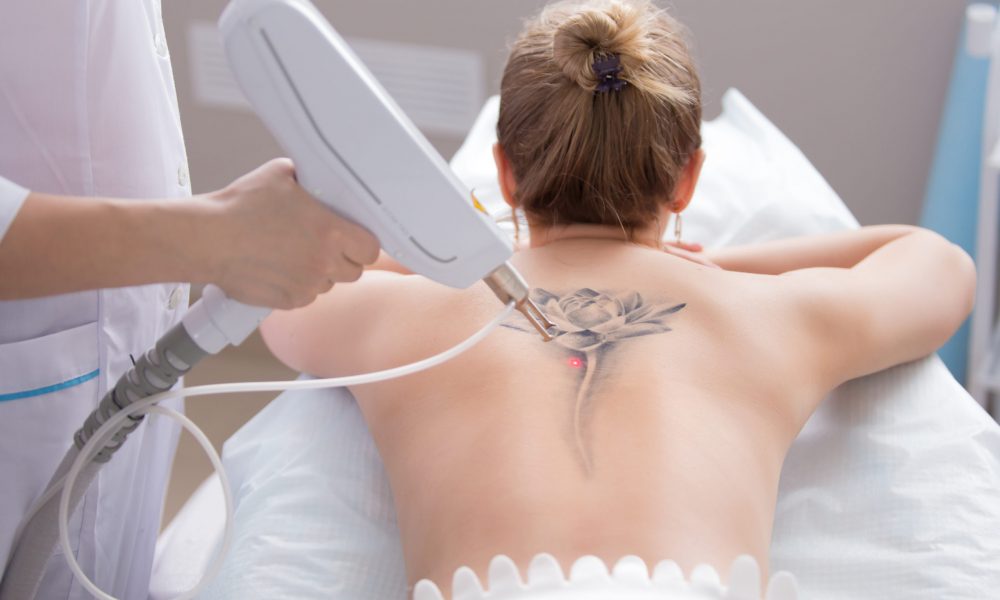Tattoos have been a form of self-expression for centuries, but sometimes, our tastes change, and what once seemed like a great idea can become a source of regret. That’s where tattoo removal comes into play, offering individuals the chance to erase their inked past and start anew. In this article, we’ll explore the modern world of tattoo removal techniques, with a focus on the state-of-the-art methods available today. We’ll also delve into the reasons why people choose tattoo removal and the essential aftercare steps to ensure a smooth recovery process.
The Evolution of Tattoo Removal
Tattoo removal has come a long way since its inception. Traditionally, methods like dermabrasion and salabrasion were used, which were not only painful but also left unsightly scars. However, advancements in technology and medical science have given birth to state-of-the-art tattoo removal techniques that are more effective, less painful, and offer minimal scarring. Let’s dive into some of these cutting-edge methods.
Laser Tattoo Removal: A Game-Changer
Laser tattoo removal is undeniably the gold standard in tattoo removal today. It has revolutionized the industry, making the process safer and more efficient. Using high-intensity laser beams, this technique breaks down the tattoo ink into tiny fragments that can be naturally absorbed and eliminated by the body’s immune system. The best part? It’s suitable for all skin types and colors.
In Singapore, laser tattoo removal is widely available and considered the go-to method for those seeking tattoo removal. The process involves multiple sessions, depending on the size, color, and age of the tattoo.
PicoSure: A Revolutionary Breakthrough
PicoSure is another remarkable innovation in tattoo removal technology. This advanced laser system operates at a picosecond pulse duration, making it significantly faster and more efficient than traditional lasers. PicoSure works by delivering ultra-short bursts of energy that shatter tattoo ink into minuscule particles, allowing for quicker clearance and fewer treatment sessions.
Q-Switched Lasers: Precision and Versatility
Q-switched lasers, including the Nd:YAG and Ruby lasers, are highly regarded for their precision and versatility in tattoo removal. These lasers emit specific wavelengths of light that target different ink colors, effectively breaking them down without damaging the surrounding skin. This method is particularly effective for multi-colored tattoos.
Why Choose Tattoo Removal?
Now that we’ve explored some of the advanced tattoo removal techniques available, let’s discuss the reasons why people choose to remove their tattoos. Tattoo removal is a deeply personal decision, often driven by a combination of factors:
Regret: The most common reason for tattoo removal is regret. People may have tattoos that no longer align with their values, interests, or lifestyle. They want a clean slate and the freedom to make a fresh start.
Professional Reasons: Some individuals may have tattoos that are not well-received in their workplace or industry. Tattoo removal allows them to maintain a professional image and career opportunities.
Fading or Aging Tattoos: Over time, tattoos may fade or lose their vibrancy, leading people to seek removal or modification to refresh their ink.
Change in Relationship Status: Tattoos related to past relationships can become painful reminders after a breakup or divorce. Many choose to remove them as part of the healing process.
Tattoo Quality: Poorly executed tattoos or those with spelling mistakes are another common reason for removal. Individuals want to replace them with higher-quality art.
Aftercare: The Key to Successful Tattoo Removal
After undergoing tattoo removal, it’s essential to prioritize proper aftercare to ensure the best results and minimize the risk of complications. Here are some crucial steps to follow:
Keep the Area Clean: Gently cleanse the treated area with mild soap and water, avoiding harsh scrubbing or rubbing. Pat the area dry with a clean, soft cloth.
Avoid Sun Exposure: Protect the treated area from direct sunlight to prevent pigmentation issues. If exposure is unavoidable, use a broad-spectrum sunscreen with SPF 30 or higher.
Don’t Pick or Scratch: Itchy or scabbing skin is a common side effect of tattoo removal. Resist the urge to scratch or pick at the scabs, as this can lead to scarring.
Moisturize: Apply a fragrance-free, hypoallergenic moisturizer to the treated area to keep the skin hydrated and help with healing.
Follow Post-Treatment Instructions: Your tattoo removal specialist will provide specific post-treatment guidelines. Follow these instructions diligently to optimize your recovery.
Attend Follow-Up Sessions: Depending on the technique used and the tattoo’s characteristics, you may require multiple sessions. Attend all scheduled appointments to achieve the best outcome.
Conclusion
The decision to remove a tattoo is deeply personal, driven by reasons ranging from regret and professional considerations to the desire for fresh ink or the need to move on from past relationships. Regardless of the motivation, proper aftercare is crucial to ensuring a successful outcome and minimizing complications.
With the ever-advancing world of tattoo removal technology, individuals now have more choices than ever to rewrite their stories, one laser pulse at a time. So, if you find yourself in a similar situation, remember that tattoo removal in Singapore offers you the opportunity to start anew, free from the ink of the past.

